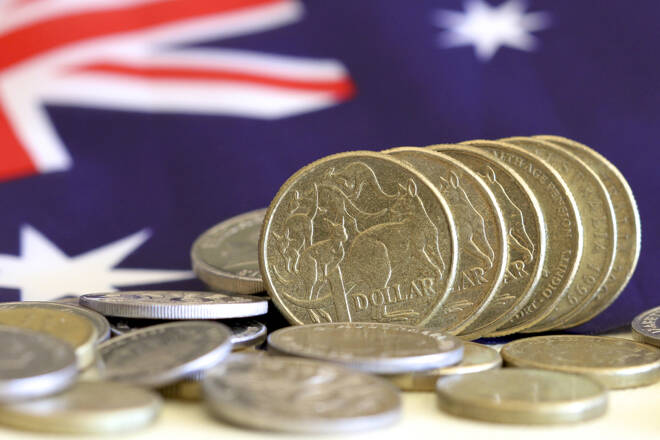Advertisement
Advertisement
AUD/USD and NZD/USD Fundamental Daily Forecast – Aussie in Weak Position Ahead of CPI Data
By:
The Australian and New Zealand Dollars were crushed on Friday after the U.S. Dollar spiked higher against its major counterparts in the New York session.
In this article:
The Australian and New Zealand Dollars were crushed on Friday after the U.S. Dollar spiked higher against its major counterparts in the New York session. The catalysts behind the selling pressure were a rise in the U.S. core personal consumption expenditures price index, the Federal Reserve’s preferred gauge of inflation, and a surge in U.S. personal spending.
Both reports came in higher than expected in January, cementing hopes that the Federal Reserve would keep raising interest rates to tame it.
On Friday, the AUD/USD settled at .6725, down 0.0082 or -1.22% and the NZD/USD finished at .6165, down 0.0063 or -1.02%. The Invesco CurrencyShares Australian Dollar Trust ETF (FXA) closed at $67.35, down $0.07 or -0.10%.
Hotter-than-Expected US Economic Data
Data from the Commerce Department showed that core PCE inflation accelerated to 4.7 percent in January from an upwardly revised 4.6 percent in December on an annual basis.
Economists had expected the annual rate of growth by core consumer prices to slow to 4.3 percent from the 4.4 percent originally reported for the previous month.
Personal spending surged by 1.8% in January after edging down by a revised 0.1 percent in December. Consumer spending was expected to jump by 1.3 percent compared to the 0.2 percent dip originally reported for the previous month.
Personal income climbed by 0.6 percent in January after rising by an upwardly revised 0.3 percent in December.
Additionally, separate data showed that U.S. new home sales increased to a ten-month high in January.
Aussie, Kiwi under Pressure Most of the Week
Prior to the release of the U.S. economic reports on Friday, the Australian Dollar was already under pressure after a wage report missed expectations and the Federal Reserve meeting minutes indicated the need for further rate hikes to tame inflation.
Australian wages grew at the fastest annual pace in a decade last quarter but that was still short of market forecasts and could dampen the pressure for further aggressive hikes in interest rates.
As a result of the report, traders had wagered interest rates could peak as high as 4.35%, but that tempered toward 4.1% following the wages news.
The Kiwi posted similar results after the Reserve Bank of New Zealand (RBNZ) raised interest rates by 50 basis points as widely expected, but RBNZ Chief Adrian Orr also forecast a recession to start in the second quarter of 2023 before growth resumes in 2024.
Looking Ahead …
Australian is scheduled to release a report on CPI on Wednesday. Last month, the report showed Australian CPI hit an all-time high of 8.4% year-on-year. This report is expected to show it subsided to 8.1%.
Whether is comes in at 8.1% or higher shouldn’t matter to the Reserve Bank of Australia (RBA) which has shown no signs that it is preparing to end its current program of rate increases.
Traders will also be looking at China which reports on Manufacturing and Non-Manufacturing PMIs and Caixin Manufacturing PMI. On Friday, China will release the Caixin Services PMI.
Out of the U.S., traders will get a chance to react to reports on durable goods, Conference Board Consumer Confidence, ISM Manufacturing PMI and ISM Services PMI.
For a look at all of today’s economic events, check out our economic calendar.
About the Author
James Hyerczykauthor
James is a Florida-based technical analyst, market researcher, educator and trader with 35+ years of experience. He is an expert in the area of patterns, price and time analysis as it applies to futures, Forex, and stocks.
Did you find this article useful?
Latest news and analysis
Advertisement
